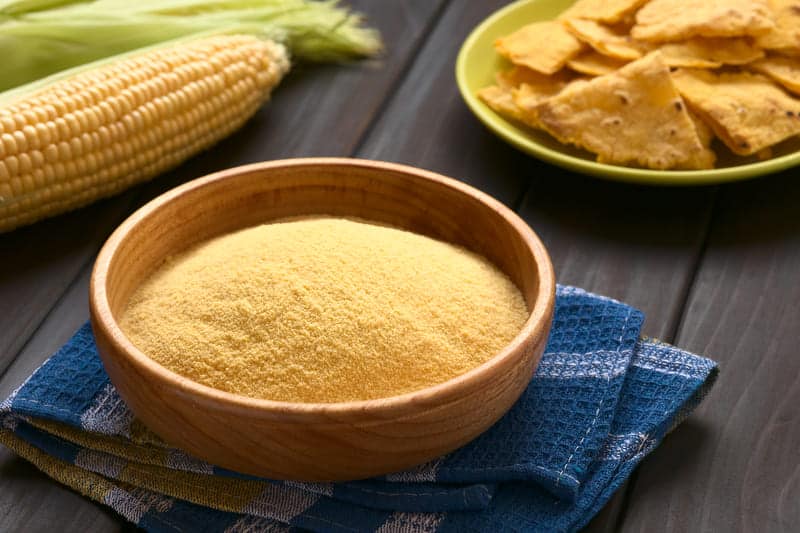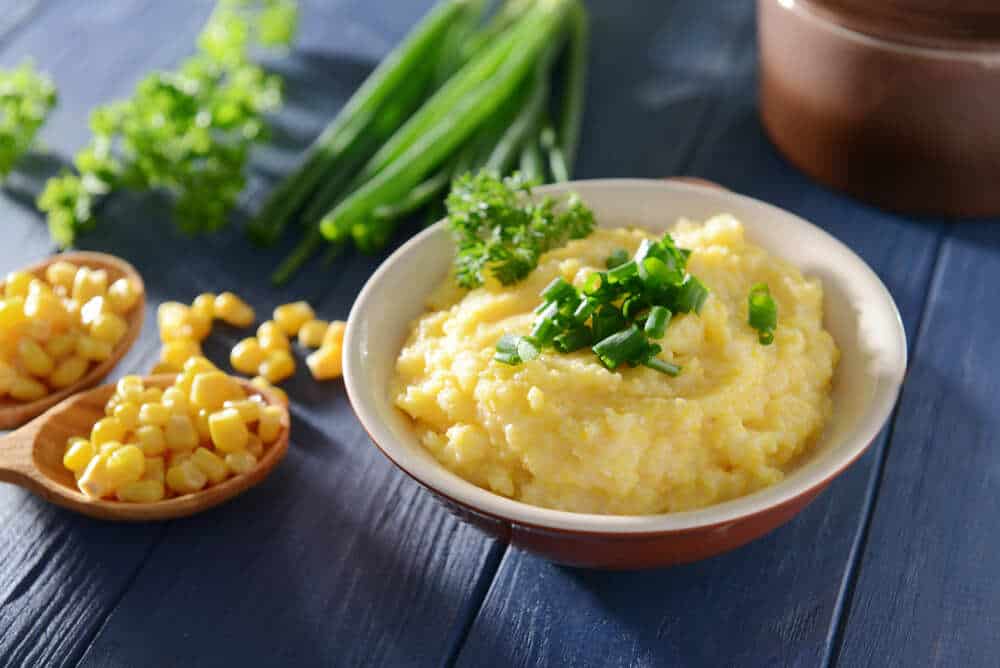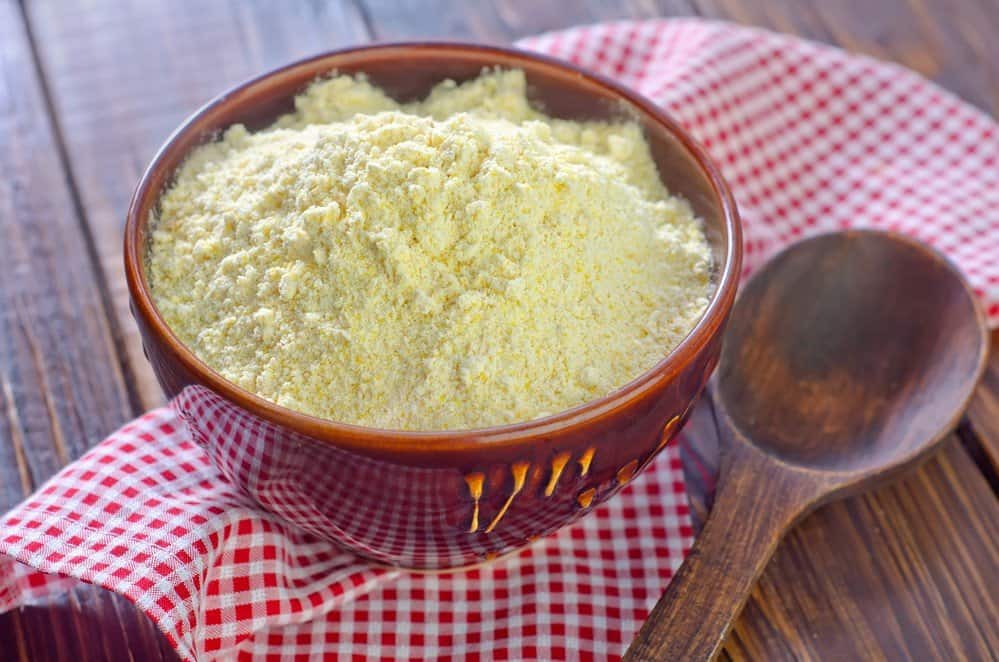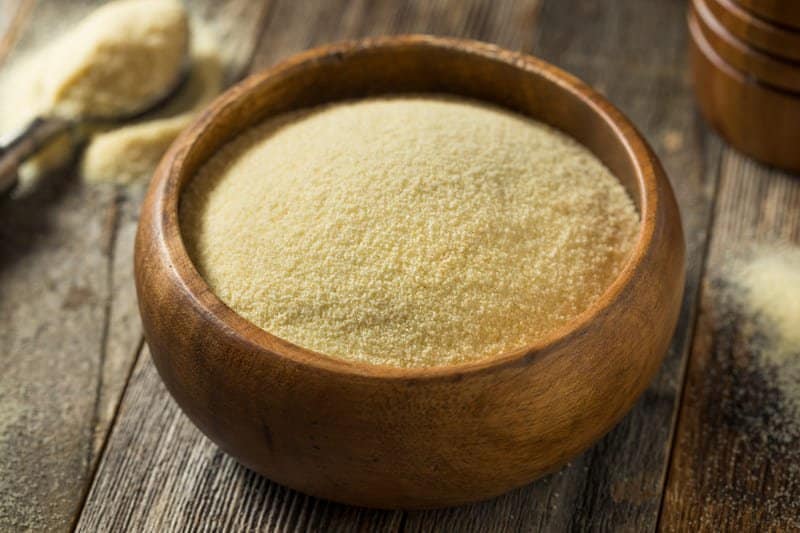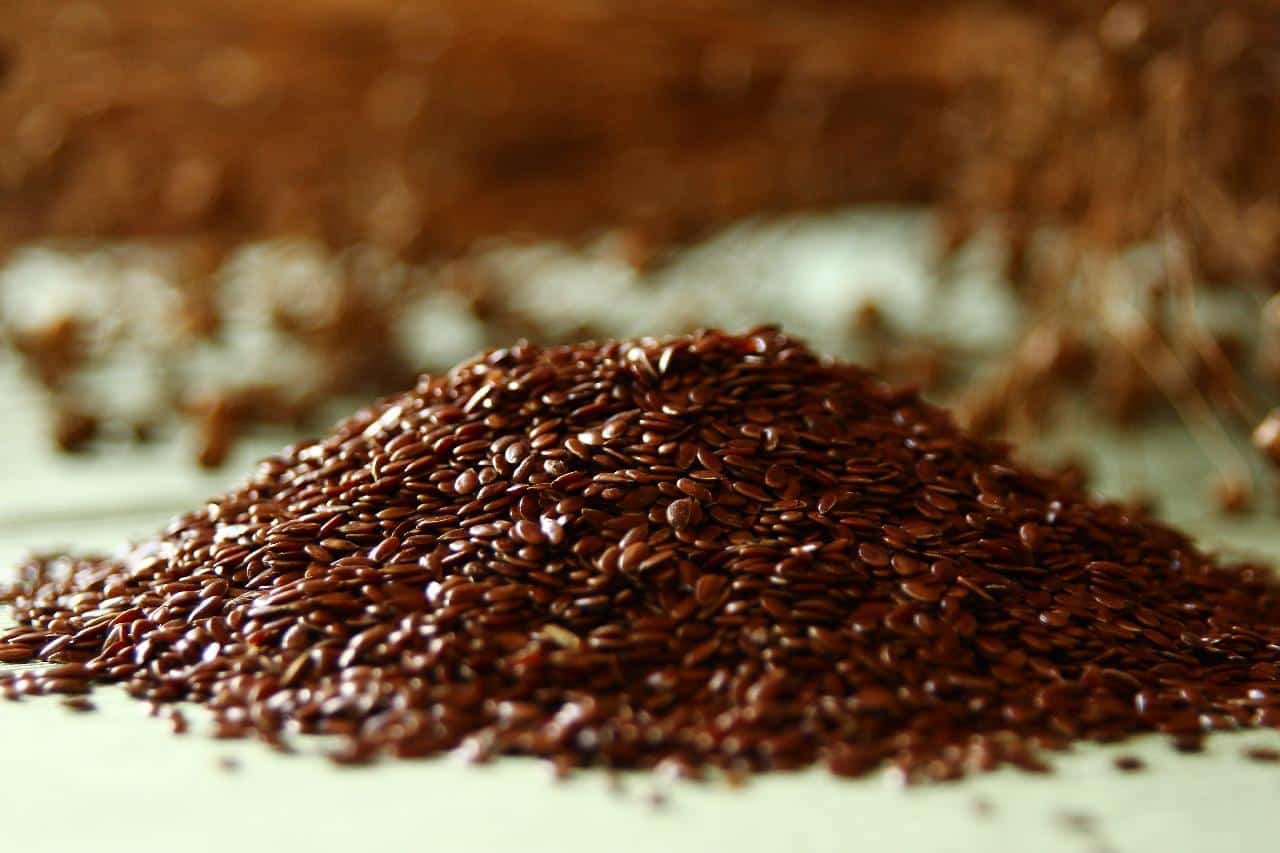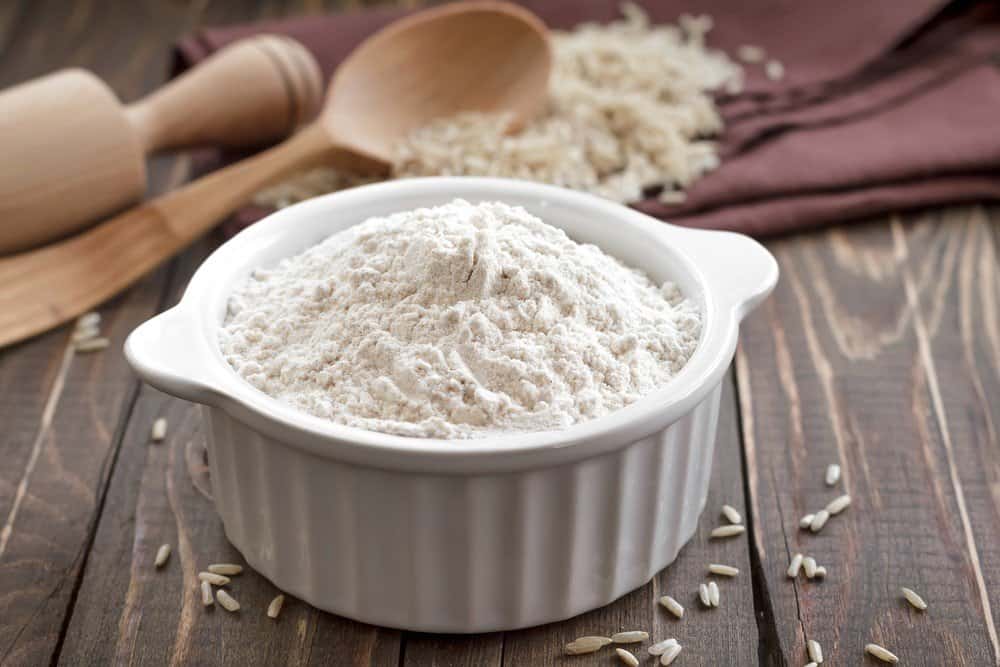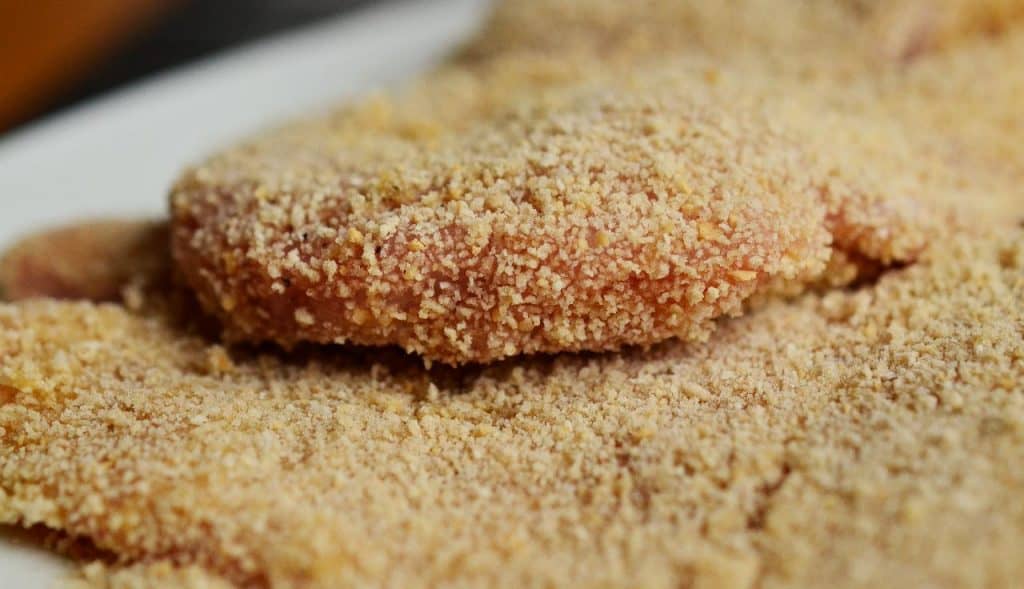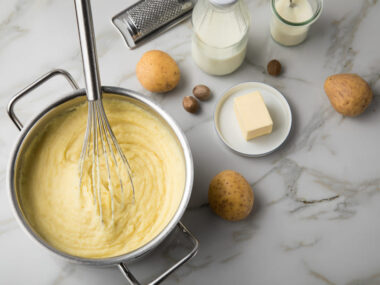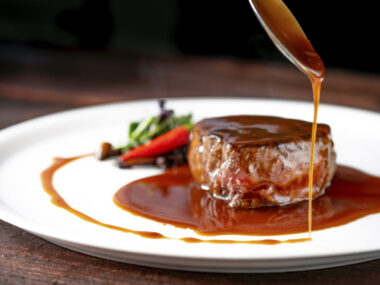Cornmeal represents a flour that is made of the ground corn kernel. However, they’re not the same even though they are both from the corn kernel. Cornmeal has a larger grain size than cornflour.
Some people use cornmeal as cereal for breakfast. It’s also used for making different meals. Even it’s finely ground, it has a rougher surface than wheat flour.
It shows up in powder structure with the granular surface. Try not to mistake it for corn-starch although occasionally individuals allude to cornflour as they do corn-starch.
Note that, the corn that makes the cornmeal is nothing similar to the mid-year old-fashioned corn. The cornmeal is produced using the bland field corn that has typically developed in the fields at that point dried. After the drying, the corn is prepared in different ways.
In today’s article, I will share a few alternatives to cornmeal you can use when you don’t have this ingredient on hand but your recipe asks for it. Some of those alternatives include corn grits, polenta, cornflour, and more. They’re divided into 2 sections: corn-filled and non-corn, so let’s take a look.
Substitutes for Cornmeal
Before you pick a substitute, you should understand how cornmeal would deal with your recipe. Cornmeal essentially has two purposes: to enhance the flavor and texture of your dish.
Therefore, if you have a recipe that requires the cornmeal flavor, substitute it with corn items. If it requires the cornmeal surface, think about all items with a comparative surface. Additionally, if you are sensitive to corn, go for items without corn.
Corn-Filled Substitutes
1. Corn grits
Corn grits are what could be compared to white cornmeal. Originating from similar pieces of the corn plant, corn grits will contribute an indistinguishable flavor.
I suggest utilizing a more modest extent of corn grits since the grain size is somewhat greater. There is anything but a widespread transformation. However, a decent beginning stage is 3/4 the amount of the first cornmeal.
For dishes that require a fluid consistency, corn grits will make a marginally thicker, yet fluid, porridge. If you wish to coordinate with the consistency of cornmeal precisely, you can lessen your corn grits to a comparable size with a blender, food processor, or processor.
In situations where you don’t have the amount of cornmeal a formula requests, you can likewise utilize a proportion of cornmeal to corn grits. Numerous cornbread plans, for instance, require a half corn grits/half cornmeal proportion which can add some intricacy to the surface of your dish. Hominy corn grits will fill in also.
2. Polenta
Same as corn grits, polenta is created by grinding corn kernels. The key difference is that polenta is made from yellow corn instead of white, and is a little coarser.
The final dish made with polenta will be sweeter and have a yellower hue to it. While Polenta is a reasonable cornmeal substitute, it is more viable to pound the item down to something like cornmeal. This will require less mystery while changing over from cornmeal to polenta amounts.
3. Corn flour/Polenta flour
On the off chance that your recipe calls for “fine” cornmeal, you can generally substitute it weight for weight with cornflour. The surface is indistinguishable so texturally, it will make a comparable item.
In case you’re staying with corn items, I suggest staying with molecule measures that are either greater or match that of the cornmeal your recipe requires.
You can make it work with smaller grain size, the surface of the final product will simply be somewhat harder to foresee.
Flour has undeniably more surface territory than its courser constituents. This can contribute a more extraordinary corn flavor to the recipe.
It will likewise prompt quicker cooking times. You can venture to slice the preparing time down the middle with specific dishes.
4. Corn chips
Put corn chips into a food processor and consistently crush until a molecule size of cornmeal is reached. Add it to the recipe as though it were cornmeal.
Most corn chips are salted vigorously which will add to the kind of your recipe. Make the corn chips have zero added salt if salt is undesired.
Non-Corn Substitutes
5. Semolina
Semolina is a one-of-a-kind flour made by grinding durum wheat kernels to a fine powder. This flour ends up being somewhat coarser than ordinary wheat flour and all the more intently looks like the surface of cornmeal.
It’s somewhat hazier and gives a more natural taste than your basic wheat flour. I recommend utilizing a bigger amount of semolina than the first recipe requests. This will help make a thicker surface, like that of cornmeal.
6. Ground flaxseed
Ground flaxseed takes after the surface of cornmeal generally well, yet the flavor is different. Flax is undeniably more bitter because of the protective nature of plant seeds.
Some contend that ground flaxseed is a better option in contrast to cornmeal because of its supplement thick innards.
7. Wheat flour
Wheat flour is a better material and a unique enhanced cornmeal substitute. The surface will be smoother (less abrasive) and the flavor will look like all the more a malty flavor.
Luckily, wheat flour can be subtle so you can add other ingredients to alter it. You may need to fiddle with the sugar and salt content to make a flavor you’re happy with.
8. Rice flour
Rice flour has both a better consistency and unexpected flavor in comparison to cornmeal. The surface might be somewhat stickier and the flavor will be sweeter but difficult to recognize. I urge you to test it and get back to me.
9. Ground oats or breadcrumbs
Ground oats and breadcrumbs are both great cornmeal replacements. The ingredients we’ve referenced so far do not have a critical part of cornmeal: the texture.
Presently, I know, I’ve discussed how many people attempt to avoid cornmeal since they don’t like the lumpiness, so for what reason would, I bring the texture up as a positive?
All things considered, there are numerous individuals out there who like cornmeal explicitly due to the texture. Ground oats and breadcrumbs make a perfect substitute for cornmeal in recipes that use it for the surface.
If you have a recipe that calls for cornmeal for texture and you’re attempting to try not to utilize corn items, these are easy decisions to utilize. Extra focuses go to ground oats for being lower in carbs than bread crumbs.
10. Tortilla chips
Squashed up tortilla chips can fill in as sort of a last-discard method of filling in for cornmeal. As a rule, it can work as a substitute for cornmeal when preparing something that utilizes cornmeal as a base, like hotcakes or cornbread.
Tortilla chips are made of corn but don’t have the same flavor as cornmeal. Also, the surface is drastically different. However, it’s a good substitute when you don’t have anything else on hand.
Related Questions
Can you use flour in place of cornmeal?
Flour is one more fixing that you can fill in for cornmeal. Rice and wheat flour are acceptable flour types you can use instead of cornmeal.
They’re especially powerful when utilized as cornmeal substitutions for baking. You can likewise take a stab at blending wheat flour with ground oats.
Is cornmeal the same as cornstarch?
Cornstarch is a starch made using corn. It isn’t to be mistaken for cornmeal. Both finely-ground cornmeal and cornmeal are once in a while called cornflour; this is hence a poor term to utilize. Cornstarch is usually utilized to thicken sauces.
What’s a good substitute for cornmeal on a baking sheet?
If cornmeal is utilized in a recipe for its surface, you may utilize substitutes, similar to semolina, breadcrumbs, ground oats, and so on.
If you are not specific about the flavor, you can try wheat flour, rice flour, tapioca, etc. They can be utilized as a cornmeal substitute for baking.
What can I use instead of cornmeal on a pizza stone?
Semolina, cornmeal, and material are generally worthy for pizza-production with a stone. I have been utilizing material all the more recently only for convenience.
You can slip the material out a few minutes into the preparing time on the off chance that you like after the outside layer has started to cook. I keep my stone on the stove constantly.
Final Words
While these substitutes won’t provide the same taste and flavor as cornmeal, they’re still great substitutes that work.
Do you have other substitutes for cornmeal on mind? Please, share your cooking tips and tricks in the comments below.
